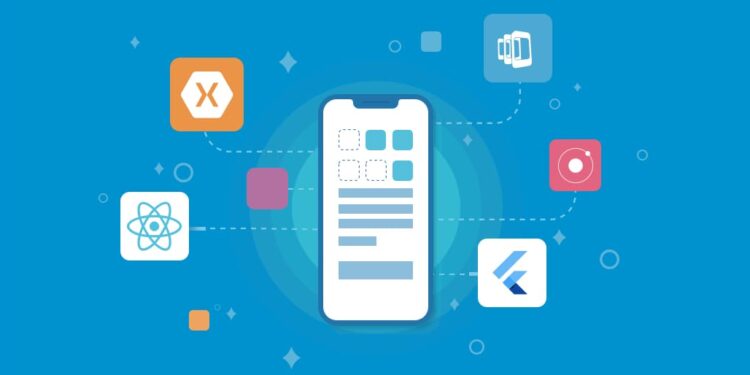Most businesses that build an app want it to be available on both iOS and Android; yet, developing applications separately may be a time-consuming job, not to mention costly.
Cross-Platform App Frameworks are without a doubt one of the most groundbreaking innovations in the mobile app development market.
Let’s take a look at how cross-platform frameworks have influenced the business.
What are cross-platform apps?
Cross-platform software may run on a variety of systems, including Windows, Android, and iOS. Cross-platform apps don’t require separate programming for each platform; instead, writing once lays the groundwork for the app to run and function across several platforms using the same code base.
The range of cross-platform app development is expanding at a breakneck speed. Cross-platform app development, on the other hand, comes with several problems, including inconsistency in communication between indigenous and quasi devices, lack of performance, and security issues.
There are several cross-platform platforms available to help with the problems of developing cross-platform mobile apps. These frameworks reduce the need for platform-specific coding and ensure that applications run smoothly across all platforms.
What are the topmost apps available for cross-platform app development?
Modern app development frameworks provide several built-in benefits, such as speed, efficiency, and a bug-free environment. The framework uses pre-built elements such as compilers, debuggers, toolsets, secure coding training plan interfaces, and so on to render the app on the target platform using the developer’s code. The mobile app developers can help them guide through the process end-to-end.
Let us look at some of them!
- Flutter: Google’s effort to the open-source application development platform is called Flutter. Flutter is an object-oriented programming language. Flutter makes it simple to instantly rebuild a widget tree to understand the impact of your changes. Flutter is a comprehensive framework that contains widgets, a graphics engine, test and integration APIs, and tools to assist developers in creating and deploying beautiful mobile apps. Google, Alibaba, and Abbey Road Studios are just a few of the well-known companies that have built apps utilizing Flutter.
- React Native: React Native is a native development environment based on the React-JavaScript library, which mobile app developers use to create intuitive user interfaces. Facebook is the one who created it. Native developers in India want React Native to stand alone, claiming that, while being cross-platform, React Native apps have the appearance and feel of native apps. The general appeal of React Native is because it allows for faster development and implementation. Reusable components, interaction with third-party plugins, and element GUI creation for front-end apps are further important characteristics of React Native. One can hire react native developers to handle & guide throughout the process of developing the cross-platform apps.
- Xamarin: Xamarin is a Microsoft-owned open-source framework that uses the.NET and C# programming languages to create native and high-performance Android, iOS, macOS, tvOS, and watchOS programs. The framework enables organizations to give end-users native performance and distinctive user experiences. An abstraction layer in Xamarin regulates communication between the underlying technologies code and the sharable code.
- Ionic: If you don’t have much time on your hands, this is a great framework for building your app. It features a single base code and a large tool library with the most up-to-date components. Development tools all around the world choose Ionic. The most major feature of Ionic is that it lets developers employ a variety of UI components in the design process, including filters, forms, view, menu options, and actions sheets. Ionic is a comprehensive framework for creating Progressive Web Apps (PWAs), hybrid, and pass mobile apps.
- Swiftic: This has to be one of the easiest to use frameworks for mobiles. One can also use it for up to 6 months as a trial. Swiftic is a useful solution because all of its plans come with a 30-day money-back guarantee. The 6-month service is free if you don’t see any results.
- Phonegap: Adobe’s PhoneGap is an open-source cross-platform software framework. Adobe PhoneGap allows developers to code in a variety of languages without having to worry about hardware limitations. It provides cloud-based solutions that allow app developers to build apps directly on the platform.
- Framework7: Framework7 is a very simple to learn and use initial platform. It allows developers to create native-looking Android, iOS, and office applications utilizing popular online standards like HTML5, JavasScript, and CSS3. Vue.js, React, and Svelte get increased support in Framework7.
Bottom Line
The mobile development trends have seen a substantial paradigm shift as a result of this progress in terms of code, script, platforms, integration, development technique, and deployment. While we transition to hybrid, native, and progressive web apps, technologies such as IoT, AI, and machine learning are becoming more prevalent.











